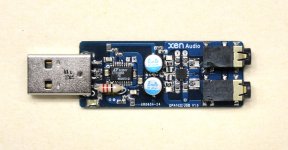TNT, those are essentially the look-back impedance that whatever feeds the 1622 sees. The feedback network is well explained in the datasheet, and worth another read. 🙂
TNT, those are essentially the look-back impedance that whatever feeds the 1622 sees. The feedback network is well explained in the datasheet, and worth another read. 🙂
OK - thanks!
//
Running it from the ladder output (resistive 560ohm) of the Soerkris R2R DAC, fed by 2 Meanwell SMPS modules (+/-15V), driving a pair of Philips Fidelio L2 the sound is effortless, resolved and dynamic with a solid a core. Very nice. I might do some comparison with two other headphone amps I own. For now, I just want to hear an other track of Chuck Mangione - An Evening of Magic Live at the Hollywood Bowl 🙂
//
//
Comparison with same power supply, headphone and source:
Diyinhk D2X High Fidelity Headphone Amplifier
OPC The wire - BAL/BAL
D2X: In some sense balanced but but restrained/bland compared to OPA EVM. Listenable.
BAL/BAL: Over-powered. Coarse. Dark/enclosed. Tiresome.
EVM again... amount of bass is between the two above. EVM is superior to both in all registers. The easy of transient, detail... really delicate but still not without energy. Also EVM sounds quite a lot more dynamic and unstrained in fortes. The sound is glad and positive with musical coherence in comparison. I really like listening to this.
And it's so tiny 🙂
I dont listen a lot to headphones due to "in head" experience but this seem to be less of a problem via the EVM as i seem to hear more ambience and a clearer view of the venue. I wonder if it could be used as a line stage between the DAC and my low and asymmetrical impedance ICE power ASP1000 and if it would improve things... but I would like it to be balanced out in this case.
Choice is easy between these. It seem to be a fine product as I see it - well done John and TI.
My impressions in my environment 🙂
//
Diyinhk D2X High Fidelity Headphone Amplifier
OPC The wire - BAL/BAL
D2X: In some sense balanced but but restrained/bland compared to OPA EVM. Listenable.
BAL/BAL: Over-powered. Coarse. Dark/enclosed. Tiresome.
EVM again... amount of bass is between the two above. EVM is superior to both in all registers. The easy of transient, detail... really delicate but still not without energy. Also EVM sounds quite a lot more dynamic and unstrained in fortes. The sound is glad and positive with musical coherence in comparison. I really like listening to this.
And it's so tiny 🙂
I dont listen a lot to headphones due to "in head" experience but this seem to be less of a problem via the EVM as i seem to hear more ambience and a clearer view of the venue. I wonder if it could be used as a line stage between the DAC and my low and asymmetrical impedance ICE power ASP1000 and if it would improve things... but I would like it to be balanced out in this case.
Choice is easy between these. It seem to be a fine product as I see it - well done John and TI.
My impressions in my environment 🙂
//
Last edited:
Glass encapsulated diodes are another example for sure, can't believe I forgot that one!
If you make a massively parallel OPA1622 amplifier please post pics! A fellow TI employee had mentioned doing a project like that a few months ago but I'm not sure how he progressed. He's based in Dallas (not Tucson, AZ where I am) so I don't see him often enough for project updates.
And thank you for pointing out the "creative" categorization of the OPA1622. I can ask our marketing team if this is something we can point out to the distributor.
I've been running a dual parallel OPA1622 on the output for a couple of months now. Insane drive and measures excellent. Waiting for the final board version now. It can take quite the punishment! 🙂
Jacken
An externally hosted image should be here but it was not working when we last tested it.
Comparison with same power supply, headphone and source:
Diyinhk D2X High Fidelity Headphone Amplifier
OPC The wire - BAL/BAL
D2X: In some sense balanced but but restrained/bland compared to OPA EVM. Listenable.
BAL/BAL: Over-powered. Coarse. Dark/enclosed. Tiresome.
EVM again... amount of bass is between the two above. EVM is superior to both in all registers. The easy of transient, detail... really delicate but still not without energy. Also EVM sounds quite a lot more dynamic and unstrained in fortes. The sound is glad and positive with musical coherence in comparison. I really like listening to this.
And it's so tiny 🙂
I dont listen a lot to headphones due to "in head" experience but this seem to be less of a problem via the EVM as i seem to hear more ambience and a clearer view of the venue. I wonder if it could be used as a line stage between the DAC and my low and asymmetrical impedance ICE power ASP1000 and if it would improve things... but I would like it to be balanced out in this case.
Choice is easy between these. It seem to be a fine product as I see it - well done John and TI.
My impressions in my environment 🙂
//
Wow. Thank you very much for your listening impressions and the high praise. I'm really glad that you enjoy the listening to the OPA1622!
I've been running a dual parallel OPA1622 on the output for a couple of months now. Insane drive and measures excellent. Waiting for the final board version now. It can take quite the punishment! 🙂
Jacken
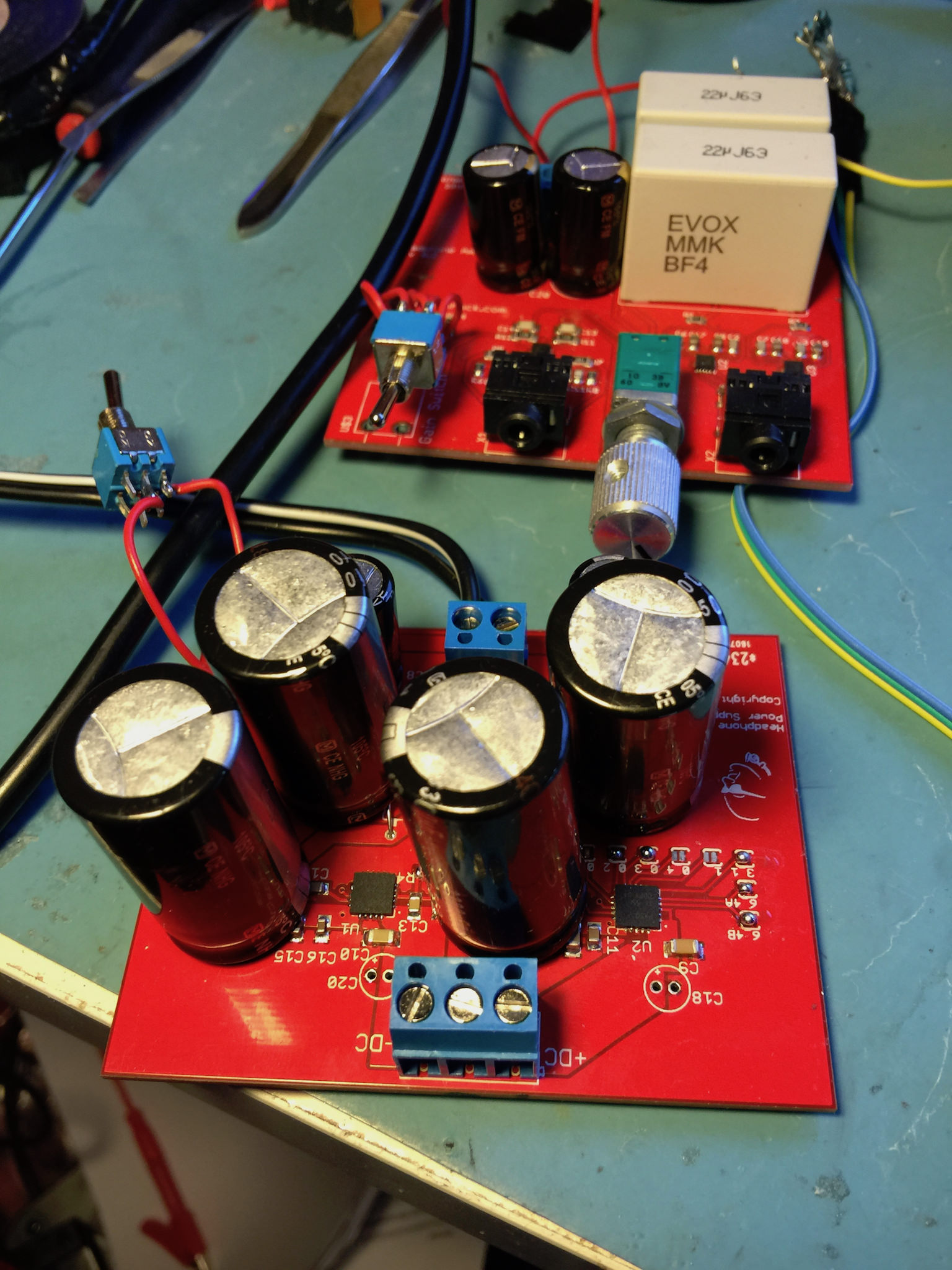
Awesome project!
Looking at my 3 contenders, the EVM stands out as having no big el-lytics on it. Significant?
//
//
opa1622 is a great opamp
official datasheet page 9 figure 17, for 32ohm load, THD become vertical at ~1.5vrms output.
But at Page 25 Figure 55, 32ohm load, THD become vertical at ~2.1vrms,
any idea which one to use when design?
official datasheet page 9 figure 17, for 32ohm load, THD become vertical at ~1.5vrms output.
But at Page 25 Figure 55, 32ohm load, THD become vertical at ~2.1vrms,
any idea which one to use when design?
Different supply voltages and different test protocols. Thermal protection kicking in sooner on the higher rails? Still a bit of a curious effect.
Different supply voltages and different test protocols. Thermal protection kicking in sooner on the higher rails? Still a bit of a curious effect.
The difference in supply voltage is exactly what is causing this effect. The graph on page 9 is taken with +/-18V supplies, the graph on page 25 is taken with +/-5V supplies. The higher supply voltages cause increased power dissipation in the op amp which can trigger the on-chip thermal protection circuit.
Hi John,
Sorry for advance for the basic question.
Could I swap in a dip 8 sockect a NJR NJM4580D by a 16xx family in a preamp section, or does it need more special care for decoupling ?
I was on the road to buy a NJR njm4546, but can't find it anymore !
(thr circuit is a basic preamp dip 8 standalone oap in a Nad 2010 Monitor Pro amp !
of course i thinked to the LM4562, but I believe the 4580D was choosed for its higher current capacity while not entirely being sure of that !
Thank you if any tips about that (all opinion is welcome)
Sorry for advance for the basic question.
Could I swap in a dip 8 sockect a NJR NJM4580D by a 16xx family in a preamp section, or does it need more special care for decoupling ?
I was on the road to buy a NJR njm4546, but can't find it anymore !
(thr circuit is a basic preamp dip 8 standalone oap in a Nad 2010 Monitor Pro amp !
of course i thinked to the LM4562, but I believe the 4580D was choosed for its higher current capacity while not entirely being sure of that !
Thank you if any tips about that (all opinion is welcome)
It's hard to give a definite yes or no answer without seeing the schematic of the circuit and knowing what the op amp is accomplishing in the greater scheme of things. You might give the OPA1602 a try since it has noise specs comparable to the LM4562 and is capable of higher output current.
Since the OPA1602 is a significantly wider bandwidth device however you're going to want to check to make sure it's not oscillating when installed in the circuit. Make sure the op amp doesn't get extremely hot and even better check the output of the op amp with an oscilloscope to check for oscillations.
Since the OPA1602 is a significantly wider bandwidth device however you're going to want to check to make sure it's not oscillating when installed in the circuit. Make sure the op amp doesn't get extremely hot and even better check the output of the op amp with an oscilloscope to check for oscillations.
Hi John,
I have made an headphone amplifier using the opa1622, it work fine but doesn't sound very great. I have some other portable amps as reference: jds c5d, cayin c5, o2. Although i think i can hear more detail with my opa1622, its soundstage is quite closed in, not as spacious as the amp i mentioned above, i think it also lack dynamic and sounds a bit soft.
I measure it using the qa400 and it's the best measured amp in line with the o2: only 0.0008% thd at 400mv@32R but doesn't sound convincing enough.
Here is the schematic and layout, can you take a look and see if i can do anything to improve it? Parts value i used:R1/R3 220, R2/R4 10k, R5/R6 1.5k, R7/R8 1k, C1/C2 1uf/x7r, C5/C6 10uf tantalum, C3/C4 220pf, R9/R10 short, volume pot 10k, power supply using 2 9v decoupling by 220uf capacitor. With the above component i got about 1mv dc offset at ouput.



I have made an headphone amplifier using the opa1622, it work fine but doesn't sound very great. I have some other portable amps as reference: jds c5d, cayin c5, o2. Although i think i can hear more detail with my opa1622, its soundstage is quite closed in, not as spacious as the amp i mentioned above, i think it also lack dynamic and sounds a bit soft.
I measure it using the qa400 and it's the best measured amp in line with the o2: only 0.0008% thd at 400mv@32R but doesn't sound convincing enough.
Here is the schematic and layout, can you take a look and see if i can do anything to improve it? Parts value i used:R1/R3 220, R2/R4 10k, R5/R6 1.5k, R7/R8 1k, C1/C2 1uf/x7r, C5/C6 10uf tantalum, C3/C4 220pf, R9/R10 short, volume pot 10k, power supply using 2 9v decoupling by 220uf capacitor. With the above component i got about 1mv dc offset at ouput.



Overall, your circuit looks fine to me. The fact that THD measures well and the DC offset is fairly low is a good sign that there isn't a serious engineering issue with the circuit. Have you tried measuring the frequency response to see if it is flat through the audio band?
rev B Figure 13. Closed-Loop Gain vs Frequency Wrong?
just reviewed the datasheet, Figure 13. Closed-Loop Gain vs Frequency looks wrong, did it get normalized by bandwidth and then plotted by MHz?
wanting to check in sim I was also disappointed when the PSpice model didn't have the gnd pin which is critical to accurate PSSR per the DS commentary
just reviewed the datasheet, Figure 13. Closed-Loop Gain vs Frequency looks wrong, did it get normalized by bandwidth and then plotted by MHz?
wanting to check in sim I was also disappointed when the PSpice model didn't have the gnd pin which is critical to accurate PSSR per the DS commentary
just reviewed the datasheet, Figure 13. Closed-Loop Gain vs Frequency looks wrong, did it get normalized by bandwidth and then plotted by MHz?
wanting to check in sim I was also disappointed when the PSpice model didn't have the gnd pin which is critical to accurate PSSR per the DS commentary
Hmm...thank you for bringing this to my attention. I'd expect some funniness on the closed-loop gain curves due to the pole zero pairs in the open loop gain. But the bandwidth in a gain of +1 and -1 looks too low to me on that graph. It should be about 8 MHz in a gain of +1.
As for the SPICE model, the issue is that the internals of a spice model are not a transistor level model of an op amp. They're functional blocks, each implementing a different aspect of the amplifier's functionality. Since the loop compensation inside the macromodel is implemented differently than the real part, modeling the behavior of the ground pin would have required a completely new architecture, which was outside the scope of our project at the time. Creating a SPICE model which converges in all simulators and models as much of the amplifier behavior as possible is no small task. The PSRR of the model for both rails should be close to the datasheet curves, which assumes that the GND pin is connected to ground.
I tried to put OPA1622 to the output buffer of FiiO X3II player in place of LMH6643. The sound became excellent - clarity and powerfull. Amazing amplifier, no problem with unity gain stability. No thermal problems on 32Ohms earphones. It was very hard to solder VSON to the SO-8 place. Therefore I developed PCB converter to SOIC-8 placement but can't check it now, cause I had only one chip and TI discontinue to sent free samples to Russia.
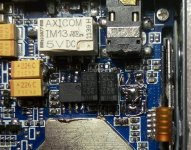
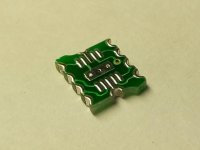
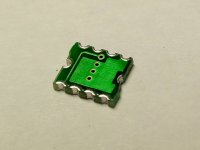
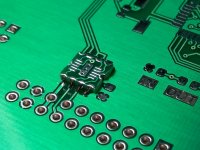




- Home
- Vendor's Bazaar
- New Audio Op Amp - OPA1622
